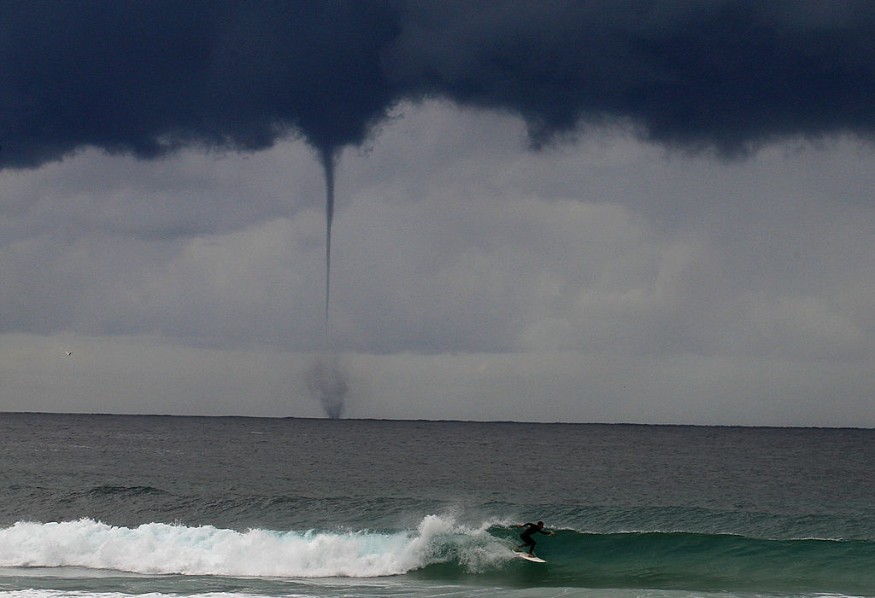A waterspout transformed into a weak tornado and immediately dissipated upon landfall at a beach resort in Fort Myers, Florida, on Saturday, March 12. However, the tornado had caused minor injuries and knocked chairs, tables, and other objects along its path.
From Waterspout Into Tornado

Beachgoers at the Lani Kai Beach Resort in Fort Myers experienced a move-like natural phenomenon when a waterspout suddenly turned into a tornado on Saturday. The incident occurred during a storm and severe weather in the Southeast US over the weekend, according to the Miami Herald.
In a viral story that circulated on social media, 10 Tampa Bay news posted an official video on YouTube of the said waterspout-turned whirlwind incident on Monday, March 14. The video showed beachgoers glancing at a waterspout on the sea but they eventually ran off when it made landfall as a tornado.
The waterspout reportedly landed as an EF-0 tornado under the Enhanced Fujita scale (EF scale), a measurement used to determine the intensity and strength of a twister. The EF-0 level is the lowest among the five levels of the EF scale.
Waterspout Types
According to the National Oceanic and Atmospheric Administration (NOAA) - National Ocean Service (NOS), a waterspout is a circulating column consisting of air and water. However, it is categorized into two categories: fair weather waterspout and tornadic waterspout.
The NOAA - NOS states fair weather waterspouts develop from the water's surface and work their way up toward a developing cumulus cloud. Fair weather waterspouts are usually short-lived and dissipate quickly when they make landfall compared to tornadic waterspouts.
Meanwhile, the US ocean agency attributes a tornadic waterspout to a thunderstorm. In contrast to fair-weather waterspouts, tornadic waterspouts form in a downward spiral pattern. In summary, tornadic waterspouts are tornadoes that form over a body of water or those that move from land to water.
With this, the waterspout that turned into a tornado at the Fort Myers Beach resort on Saturday can be considered a tornadic waterspout. This is due to the fact that fair weather waterspouts occur during relatively fair and calm weather, according to NOAA's National Weather Service (NWS).
What to Do During a Waterspout?
Just like a land tornado, the NOAA - NWS also issues a tornado warning when a waterspout reaches inland or makes its initial landfall. Although there is a variation between tornadoes and waterspouts, the latter is still capable of emitting moderate to intense damaging winds.
According to the US weather agency, people should move away from a waterspout at a 90-degree angle relative to its direction instead of staring or investigating a waterspout. The agency emphasized this measure is best used especially an individual's boat is caught in a waterspout.
The NOAA - NWS acknowledges that waterspouts are weaker than tornadoes. Yet, monitoring local weather warnings and avoiding them is still necessary since they can still cause life-threatening and damaging winds.
Related Article: Waterspouts: What You Need to Know About the Shifting Weather Patterns Over Great Lakes
© 2025 NatureWorldNews.com All rights reserved. Do not reproduce without permission.




